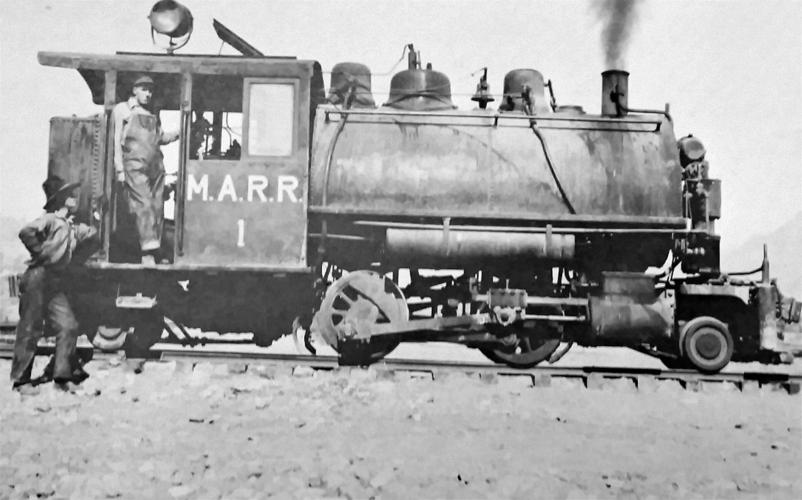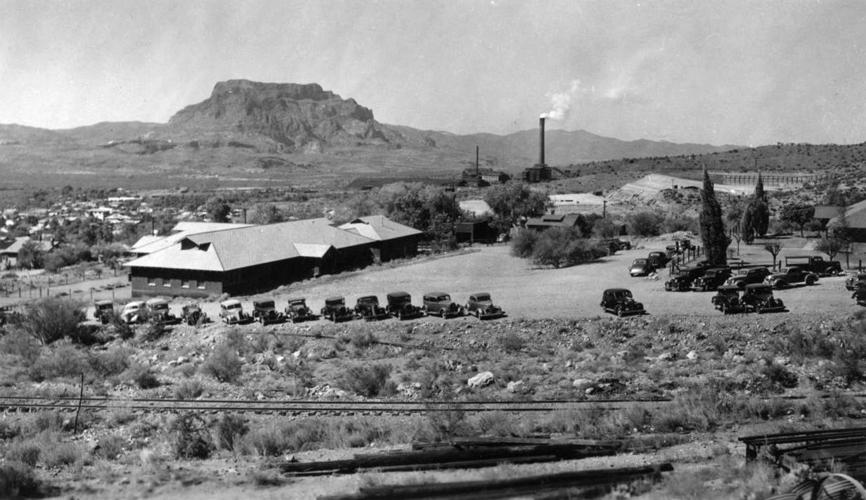The impetus for the Magma Arizona Railroad originated from the necessity in providing ore transport for the mines around Superior beginning in 1875 with the discovery of a rich silver lode by Charles G. Mason, Isaac Copeland, Benjamin W. Reagan and W. H. Long.
Further discoveries resulted in the formation of the Pioneer Mining District, including the Silver King Mine and later the Silver Queen Mine, which came to be known as the Magma Mine after the incorporation of the Magma Copper Co. by William Boyce Thompson and George Gunn on May 20, 1910.
Financial support then arrived to build the needed railroad that would supplant the costly ore teams.
On Oct. 13, 1914, the Magma Arizona Railroad Co. was incorporated as a subsidiary of the Magma Copper Co. The MacArthur Brothers were awarded the contract to build a 30.36-mile, 36-inch narrow-gauge rail line from Magma Station, formerly known as Webster, to Superior at a cost of $160,000.
Extensive building operations commenced at the end of 1914. More than 250 men and 125 mules were involved in grading, bridge excavations and track surfacing, with the last spike driven on April 29, 1915.
Cuts requiring extensive excavation and fills proved challenging during construction, causing the contractor to go over budget.
The railroad began transporting the rich copper ore, some exceeding 40 percent copper, with four steam locomotives acquired from the American Locomotive Co. during World War I.
Although the war contributed to the rise in copper prices, it also was responsible for a shortage of labor, which delayed repairs to the railroad of damage from fires and flooding.
A new standard-gauge railroad was built by the Twohy Brothers in 1923 alongside the existing narrow gauge. The salvaged narrow-gauge rail was later sold to the Old Dominion Mine for use as underground tracks for the electric mine tramway.
The engines were serviced by water stops at Desert Wells and Queen.
Prior to the completion of the Magma Copper Co.’s smelter at Superior in 1924, concentrates were shipped to the Hayden smelter using the Arizona Eastern Railroad junction at Magma.
Business for the railroad declined during the Great Depression with the closure of many local mines.
By 1940, passenger and mail service was discontinued due to declining profits and alternative methods of transportation such as automobiles and trucks.
However, World War II and the ensuing decades saw the re-emergence of the Magma Mine as a producer, contributing to the resurgence of the railroad.
The area around Picketpost Mountain west of Superior contained substantial deposits of perlite worked at four mines after World War II. Several spurs along the Magma Arizona Railroad were established near Superior to accommodate the perlite industry with direct shipments of the volcanic material.
Perlite is a glassy volcanic rock of rhyolitic composition named after its pearl-like structure. It has the ability to expand like popcorn when heated and is used in commercial applications such as plasters, insulation and fire-resistant materials.
The 1960s saw the Magma Arizona Railroad used in movies, as it was one of the last steam operations in the country. Several prominent movies were shot on-site, including “How the West Was Won” and “Cheyenne Autumn.”
The Magma Arizona Railroad faced challenges as the building of steam locomotives declined, and there also was dearth of spare parts needed to maintain the fleet of engines.
It ultimately succumbed to the diesel revolution. The final weeks of steam operation occurred in August 1968, a decade after steam engines were replaced with diesels among the major railroads. That same year, the railroad set a record of outbound tonnage: 81,177 tons.
The closure of the smelter at Superior by the Newmont Mining Corp. on July 11, 1971, due to a labor dispute and mounting environmental regulations, increased the workload of the railroad, which included daily, heavy loads of bulky concentrates instead of the previous transport of copper anodes several times a week.
The line continued to operate until shortly after the merger of the Magma Copper Co. and the Broken Hill Proprietary Co. Ltd. (BHP) and subsequent closure of mining operations around Superior in 1996.
The development of the Resolution Copper Mine near Superior, currently the largest discovered copper deposit in the United States, may revive the Magma Arizona Railroad, which is currently owned and being refurbished by the Resolution Copper Co.





